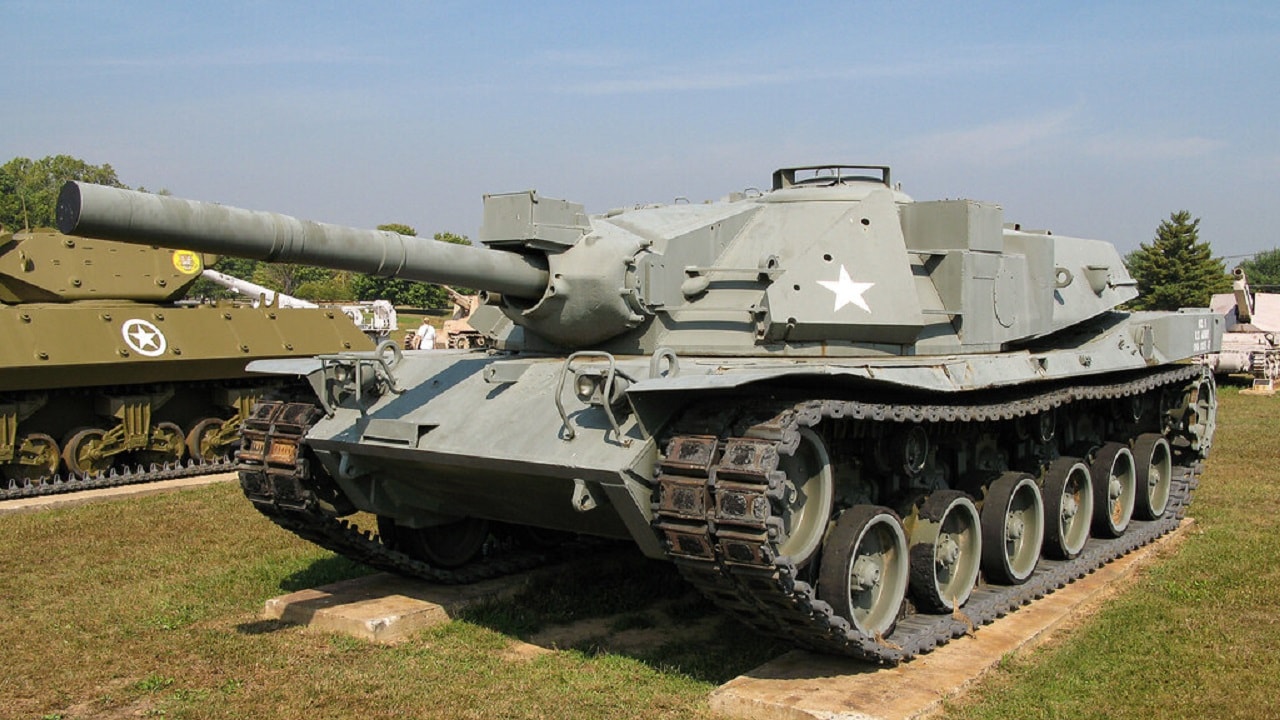During the height of the tense Cold War in the 1960s, just as the Berlin Wall was establishing itself as a barrier, the US and West Germany collectively decided to embark upon an ambitious new tank-modernization effort and built the temporarily famous MBT-70 main battle tank.
This tank had 1 mission: fight a war against the Soviet Union.
The project included several key unprecedented innovations but ultimately failed due to cost overruns, developmental delays, and concerns that the tank would encounter mass production and deployability problems.
However, as is often the case with ambitious efforts that wound up getting canceled, its longer-term impact outlived its shorter-term development, as the MBT-70 pioneered numerous technologies that clearly informed tank designs and weapons stretching years into the future.
Using a remote-controlled 20mm autocannon was ahead of its time. In later years, the Army extensively used various remotely operated weapons systems.
Remotely Operated Weapons
In later years, the US Army developed the widely known Common Remotely Operated Weapons System (CROWS), which continues to arm many of its combat vehicles. The concept is clear: It enables soldiers with weapons to acquire targets and attack without having to expose themselves to direct enemy fire by virtue of remaining under armor.
This cannon and gun operation has become somewhat standard in modern times, yet it was part of the MBT-70 design in the 1960s.
The MBT-70 also became famous for its “all-in-crew-turret” design, which was intended to lower the vehicle’s height and improve survivability.
While the concept makes sense, the configuration caused difficulties in actual operations, as it created maneuverability problems and “cramped” space for the crew, resulting in motion sickness.
Surprisingly, the MBT-70 was also found to be much more vulnerable than anticipated, as its armor was perceived as weak and “penetrable” by other tanks of its time. As a result, the tank’s fire control system was considered unreliable and overly complex.
These variables were likely critical elements in the ultimate decision to cancel the tank. However, as is often the case with canceled programs, the innovations were not lost but adapted to future platforms. While the US Army abandoned the MBT-70 in favor of the Abrams Main Battle Tank, the concept of a remotely controlled cannon and advanced suspension were incorporated into the design.
Advanced Suspension
The most significant and longest-lasting innovation central to the MBT-70 could arguably be its “hydropneumatic suspension” system, a technology engineered to improve ride quality by combining hydraulic and pneumatic systems so that gas can absorb force while hydraulics directly transfer force.
This kind of suspension enabled the now widely used “variable ride height suspension,” creating a flexible and adaptable ground-clearance capability depending upon terrain.
The Oshkosh M-ATV, for example, is known for its advanced TAC-4 suspension system, which could be understood as a byproduct of the hydropneumatic suspension initially built into the MBT-70 tank.
There were likely also practical and geopolitical concerns in the 1960s, as West Germany was by no means experienced in collaborating with the US in weapons development.
However, given the success of Germany’s Panzer tanks in WWII, it makes sense that the countries might wish to partner.
At the same time, there simply may not have been the production infrastructure to support any kind of large-scale manufacturing of the MBT-70 at this point in time, a logistical difficulty that likely weighed heavily upon tank developers.
Also, while Germany may not have been prioritizing or fully envisioning what would be its ultimate reunification, the idea of a US-West Germany major platform weapons development collaboration could have complicated the delicate and extremely tense geopolitical circumstances surrounding post-WWII Germany.
Yet another factor is that during 1960s post-war Germany, there was much rebuilding still being done, given the massive extent to which allied bombs destroyed the countries’ significant buildings, facilities, and basic infrastructure.
About the Author: Kris Osborn
Kris Osborn is Military Technology Editor of 19FortyFive and the President of Warrior Maven – Center for Military Modernization. Osborn previously served at the Pentagon as a highly qualified expert in the Office of the Assistant Secretary of the Army—Acquisition, Logistics & Technology. Osborn has also worked as an anchor and on-air military specialist at national TV networks. He has appeared as a guest military expert on Fox News, MSNBC, The Military Channel, and The History Channel. He also has a Masters Degree in Comparative Literature from Columbia University.

